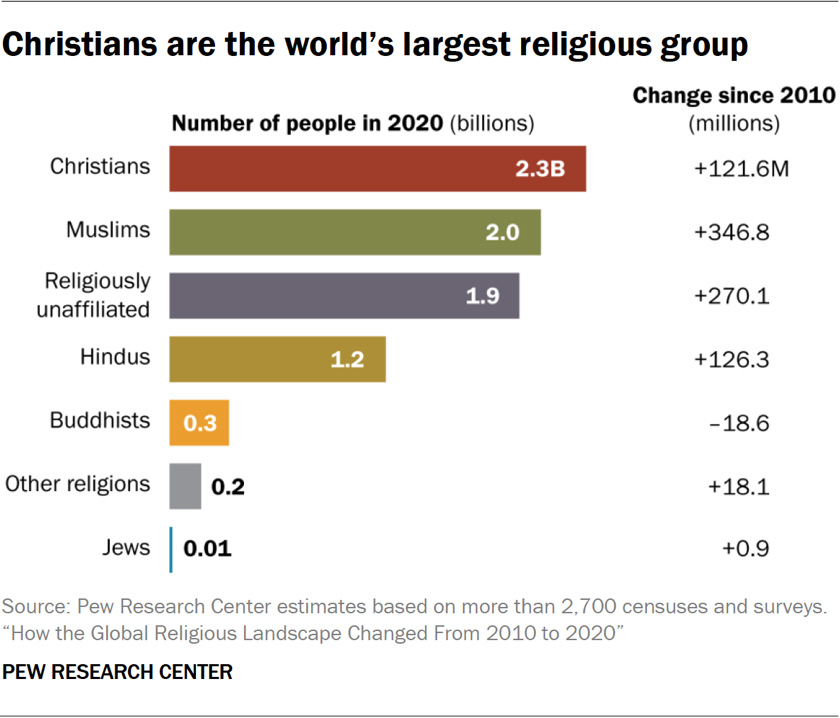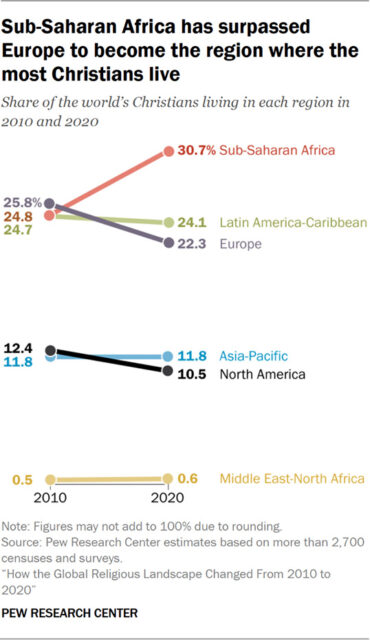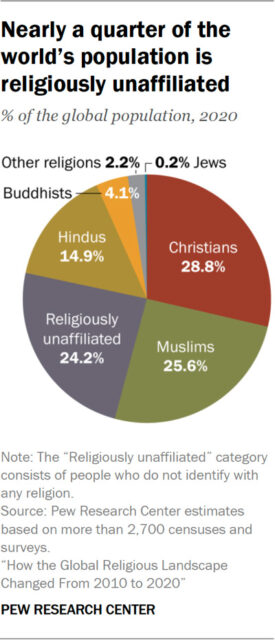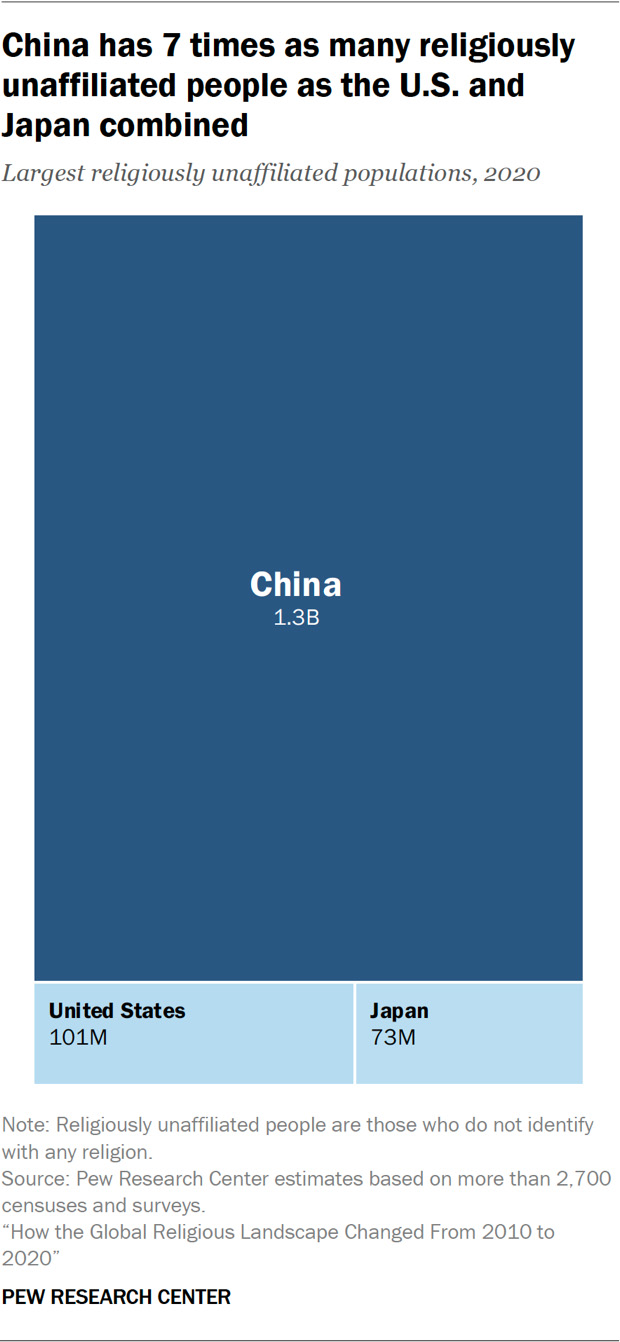A new global demographic report from the Pew Research Center has identified Islam as the fastest-growing religion worldwide between 2010 and 2020. The comprehensive study highlights a significant rise in the global Muslim population, outpacing other religious groups due to high birth rates and youthful populations in regions such as Sub-Saharan Africa and Asia-Pacific.
Released on June 9, the latest edition of Pew’s Global Religious Landscape report analyzes data from over 2,700 sources including national censuses, demographic surveys, and population registries across 201 countries. The research covers major faith groups — Muslims, Christians, Hindus, Buddhists, Jews, and the religiously unaffiliated — along with smaller faiths such as folk religions and Zoroastrianism.
“We study demographic attributes like age, fertility, education, and mortality, which all influence the future of religious populations,” said Conrad Hackett, Pew’s senior demographer, in an interview with RNS. READ MORE: Pakistan Urges India to End State-Backed Discrimination Against Muslims
According to the report, the Muslim population surged by 347 million in the last decade — more than all other faiths combined — largely due to high fertility and low mortality rates. Conversion played a minor role in Islam’s growth. “Muslims are having more children than are passing away,” Hackett explained.

The Asia-Pacific region saw the highest numeric growth in Muslims, with a 16.2% increase. Today, 94.2% of people in the Middle East-North Africa and 33% in Sub-Saharan Africa identify as Muslim. This growth highlights Islam’s robust demographic momentum in regions with younger populations and higher birth rates.
Christianity remains the largest religious group globally, comprising 29% of the population in 2020. However, its global share dropped from 31% in 2010 due to slower growth relative to non-Christian populations. The decline was most evident in Europe and North America, with a significant drop in countries like the United States (from 78.3% to 64%), the UK, France, Uruguay, and Australia, where Christians now form less than half the population.

Low birth rates and higher mortality rates among aging Christian populations, especially in Western nations, contributed to the shift. Meanwhile, Sub-Saharan Africa is now home to one-third of all Christians globally, indicating the faith’s pivot toward regions with higher fertility.
The number of people identifying as religiously unaffiliated — often referred to as “nones” — grew significantly as well. Now accounting for 24% of the world’s population, nones form the third-largest group globally. Their growth is largely driven by religious switching, especially in Europe, North America, Australia, and New Zealand. In these regions, the trend shows more adults leaving their childhood faith than adopting a new one.
“For every adult raised without religion who later embraced faith, approximately 3.2 left the religion they were raised in,” the report notes.
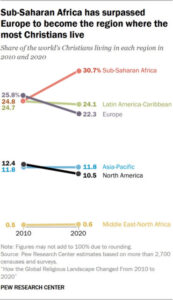
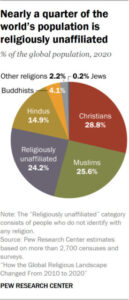
In the U.S., the religiously unaffiliated grew by 13 percentage points, reaching 30.2% in 2020. Europe saw a 6.6-point increase, now at 25.3%. The largest concentration of nones is in the Asia-Pacific region, where China alone accounts for 67% of this demographic. However, Pew researchers caution that religiosity in China remains complex and challenging to measure accurately.
Buddhism, in contrast, is the only major faith that saw a numerical decline. The Buddhist population fell by 19 million, attributed to both demographic stagnation and religious switching, particularly in East Asia.

Meanwhile, Hinduism, which constitutes 14.9% of the global population, experienced growth driven by migration. In the Middle East-North Africa region, the Hindu population rose by 62%, while North America saw a 55% increase, largely due to immigration from India, where 95% of the world’s Hindus reside.
The Jewish population — the smallest among the groups studied — grew modestly from 14 to 15 million between 2010 and 2020, a 6% increase. Approximately 46% of the world’s Jewish population resides in Israel, the highest national concentration. In the U.S., Jews make up about 2% of the population, including both religious and secular Jews.
VIEW GALLERY Fastest Growing Religion
Migration has also significantly reshaped religious distributions. In Gulf states such as Qatar, UAE, and Saudi Arabia, high levels of immigration have boosted non-Muslim populations, especially among Hindus and Christians.
The report is part of the Pew-Templeton Global Religious Futures Project, an initiative supported by Pew Charitable Trusts and the John Templeton Foundation. It aims to map global trends in religious identity, practice, and demographics through high-quality data and research.
As global dynamics evolve, the report underscores the critical role demographics play in shaping the future religious makeup of societies. With Islam leading the growth curve and Christianity undergoing significant shifts, the religious landscape of the 21st century is experiencing profound transformation.






